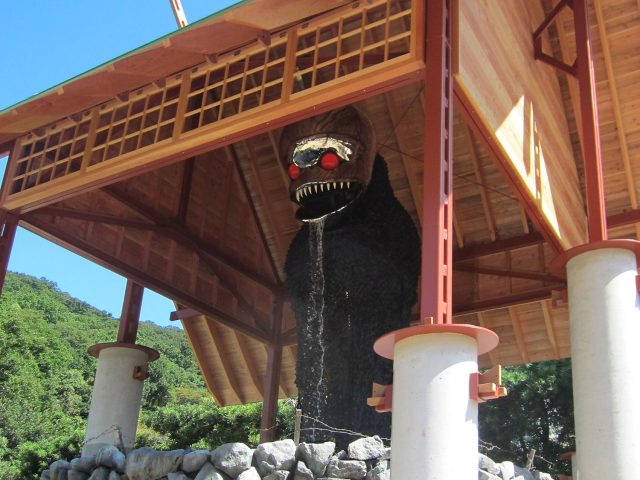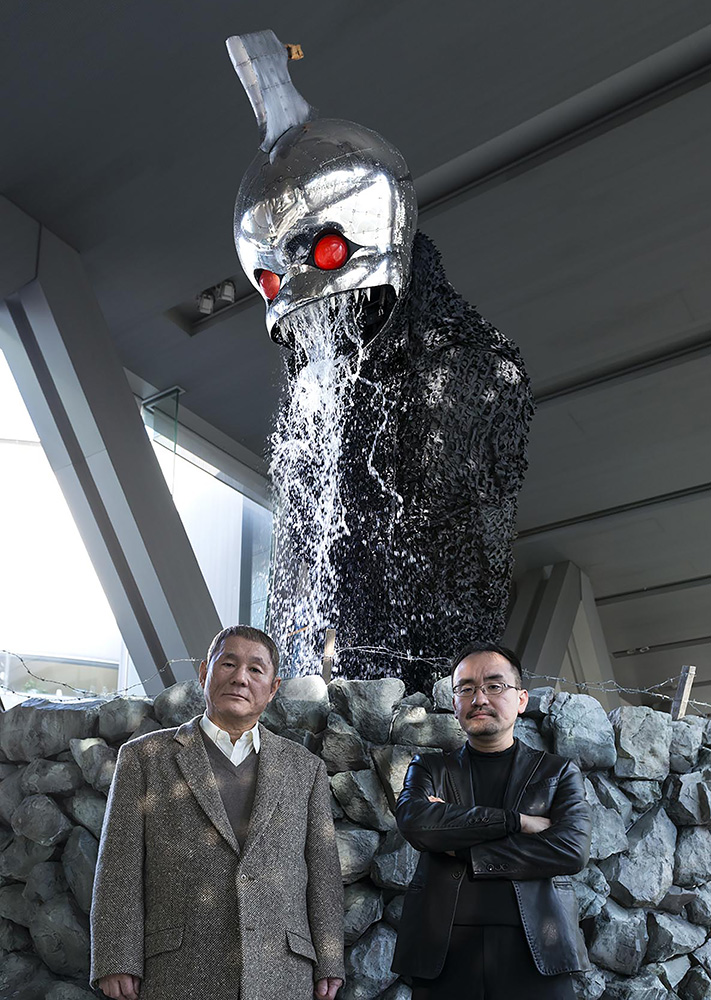(2/2) ANGER from the Bottom [2013]
From the Bottom of a Well to the Origin of Art

ANGER from the Bottom (2013) is a large-scale sculpture in which a monster comes out of an old-looking well with a stone wall, rises to the top and spits water, and then goes back. It was a collaborative production with Beat Takeshi (Takeshi Kitano), and launched as a part of a TV program when Beat Takeshi visited ULTRA FACTORY at Kyoto University of the Arts where Kenji Yanobe serves as a director.
Beat Takeshi proposed the plan for the sculpture using a motif of an old well based on his short comedy skit which is a parody of The Golden Axe from Aesop’s Fables. In this performance, the god of the lake with an axe stuck on its head appears in anger from underneath the lake after someone had dropped the heavy tool into the water. They elaborated this idea together, and Yanobe designed the sculpture of the monster which has a skull-like head, a body covered in scale, and a chin that looks like a Bunraku puppet. The entire sculpture turned out to be 8m long, and its heavy stainless steel head that spits out water was made mobile by a special mechanism that uses a hydraulic system. Also, he used stone-made molds from Fukushima to construct the stone wall for the old well.
Takeshi and Yanobe remarked sarcastically on how humans are now being subjected to nature’s violence as a result of environmental pollution. The old well, which is buried along side waste, is a symbol of humans’ faith and respect for nature’s blessings, as well as a symbol of local communities gradually dissolving. This symbol also overlaps with the situation of contaminated underground water caused by radiation from the Fukushima Daiichi Nuclear Power Plant. The sculpture was installed at the Museum of Contemporary Art, Tokyo in January 2013, and at the foot of Dounzan Mountain in Shodojima island for Setouchi Triennale 2013. The location of the work in the Setouchi Triennale was formerly to be a well. The island has a long history of people suffering from a lack of water due to low precipitation under the Seto Inland Sea climate, and the work recalled the memory of this place.
During the Triennale, the monster rose up from the well every hour and welcomed many tourists. Later, a Shinto priest and maidens performed a ritual to soothe the anger of the god who had transformed into a monster, and the monster in the end became an object of worship.
After the festival ended, a shrine was created with the support of donations from local voluntary groups It was named “Beat shrine”, in which its Chinese characters would directly translate to “beauty” and “a well” in Japanese. It enshrined water and art, and since the object of worship (the monster that comes out from the well) shrinks and extends in size, the designer group “dot architects” made the shrine’s pillars extendable.
ANGER from the Bottom transcended the simple frame of “an artwork in an art festival” and became a symbol that reflects the hope of the community as well as the reproduction of nature, tracing back the origin of festival and art.
